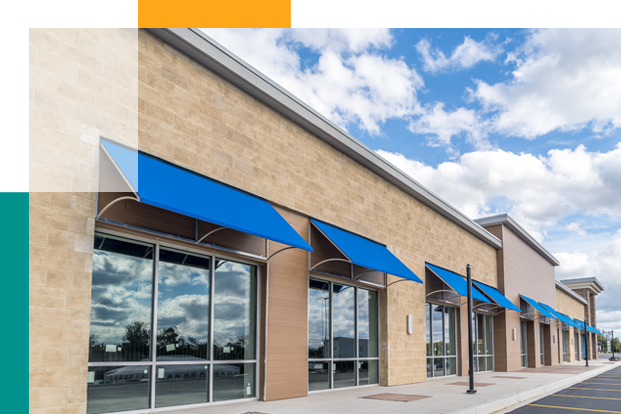DSCR Loan Requirements for Different Types of Commercial Properties

In the world of commercial real estate, the debt service coverage ratio (DSCR) is a crucial metric that lenders use to evaluate the viability of an investment property loan. Just as a high-wire artist must delicately balance on a tightrope, real estate investors must carefully navigate the intricacies of DSCR loan requirements to secure financing for their various projects.
In this blog post, we will examine:
-Common DSCR loan requirements for different commercial property types, such as office buildings, retail centers, and industrial properties
-Factors affecting DSCR requirements, including location and property performance
-Industry-specific DSCR considerations and guidelines
Understanding the nuances of DSCR mortgage requirements is essential for real estate investors seeking to finance their investment properties. Let’s dive in.
Common DSCR Loan Requirements for Various Commercial Property Types
The debt service coverage ratio (DSCR) is a measure of a property’s ability to generate enough income to cover its debt obligations. Lenders use this ratio to determine the risk associated with extending a loan to a borrower. Typically, a DSCR of 1.25 or higher is considered acceptable, although this number can vary depending on the property type and lender’s risk tolerance.
DSCR Office Buildings:
For office buildings, lenders usually require a DSCR of 1.25 or higher, as these properties tend to have stable, long-term tenants with predictable income streams. In addition to the DSCR, lenders will also examine the property’s vacancy rate, tenant mix, and the creditworthiness of its tenants.
DSCR Retail Centers:
Retail centers, such as shopping malls and strip malls, can have more volatile income streams due to fluctuations in consumer spending and tenant turnover. As a result, lenders may require a higher DSCR – often around 1.3 to 1.4 – to account for these risks. The quality of the tenants, location, and overall property condition also play a significant role in determining the required DSCR.
DSCR Industrial Properties:
Industrial properties, such as warehouses and manufacturing facilities, typically have more stable income streams than retail centers but may be subject to economic downturns or industry-specific risks. Lenders usually require a DSCR of 1.25 to 1.35 for these properties, with a focus on the property’s location, tenant creditworthiness, and the overall health of the industry in which the tenants operate.
Factors Affecting DSCR Requirements
DSCR Location:
The location of a commercial property can significantly impact its DSCR requirements. Prime locations with high demand and low supply will likely result in higher rental rates and lower vacancies, leading to a higher DSCR. Conversely, properties in less desirable locations may have lower DSCR requirements due to increased vacancy risks and lower rental rates.
DSCR Property Performance:
A property’s historical performance is another critical factor in determining its DSCR requirements. Lenders will closely scrutinize a property’s financial documents, such as tax returns and profit and loss statements, to assess its past performance and gauge its ability to meet debt obligations moving forward.
Industry-specific DSCR Considerations and Guidelines
Office Buildings
For office buildings, lenders may also consider the overall health of the local office market, as well as the property’s ability to attract and retain high-quality tenants. Properties in markets with strong job growth, low vacancy rates, and limited new supply may command a lower DSCR requirement.
Retail Centers
In the retail sector, lenders will pay close attention to the property’s tenant mix and the overall health of the retail industry. Properties with a diverse mix of tenants and strong anchor tenants may be eligible for more favorable loan terms and lower DSCR requirements.
Industrial Properties
For industrial properties, lenders will consider the property’s location relative to transportation hubs, the overall health of the industry in which the tenants operate, and the property’s ability to adapt to changes in the market. Properties with strong transportation access, modern facilities, and a diverse tenant base may be eligible for more favorable loan terms and lower DSCR requirements.
Finance Lobby DSCR Content Library
| Topic | Description |
|---|---|
| The Relationship Between DSCR, LTV, and Debt Yield in Commercial Real Estate | Explains how DSCR, LTV, and Debt Yield metrics are interconnected and influence financing decisions in commercial real estate. |
| DSCR Loan Requirements for Different Types of Commercial Properties | Discusses the varying DSCR requirements for different commercial property types, such as retail, office, and industrial properties. |
| How to Optimize a Property’s NOI to Improve DSCR | Provides strategies for optimizing a property’s net operating income (NOI) to improve its debt service coverage ratio (DSCR). |
| Refinancing and DSCR: What Commercial Real Estate Brokers Need to Know | Offers insights on the refinancing process and how DSCR plays a crucial role in securing favorable loan terms. |
| Government-Backed Loan Programs and DSCR Requirements | Explores government-backed loan programs, their DSCR requirements, and how they can be beneficial for commercial real estate financing. |
| Improving DSCR for a Successful Commercial Real Estate Loan Application | Shares tips for improving DSCR to increase the likelihood of a successful commercial real estate loan application. |
Tips for Meeting DSCR Requirements
Real estate investors seeking to finance their investment properties should consider the following tips for meeting DSCR requirements:
Strengthen Your Personal Financial Profile
Lenders will examine an investor’s personal income, credit score, and overall financial health when evaluating a loan application. By maintaining a strong personal financial profile, investors can improve their chances of securing favorable loan terms and meeting DSCR requirements.
Improve Property Performance
Investors can take steps to enhance the performance of their properties by addressing deferred maintenance, making capital improvements, and implementing rent increases where appropriate. These actions can help boost a property’s income and improve its DSCR.
Seek Out Low-Interest Rates
Lower interest rates can help investors secure more favorable loan terms and achieve a higher DSCR. Be sure to shop around and negotiate with multiple lenders to find the best interest rate for your investment property loan.
Increase Loan Amortization Period
Extending the loan amortization period can lower the required monthly debt service, which can help investors achieve a higher DSCR. Keep in mind, however, that a longer amortization period may result in higher total interest payments over the life of the loan.
Consider Alternative Financing Options
If traditional financing sources do not offer favorable loan terms or DSCR requirements, investors may want to explore alternative financing options, such as private loans, seller financing, or partnerships with other investors.
By understanding the DSCR loan requirements for various commercial property types and taking proactive steps to meet these requirements, real estate investors can position themselves for success in securing financing for their investment properties.
In the ever-evolving landscape of commercial real estate, the ability to adapt and strategize is crucial for investors seeking to make their mark.



